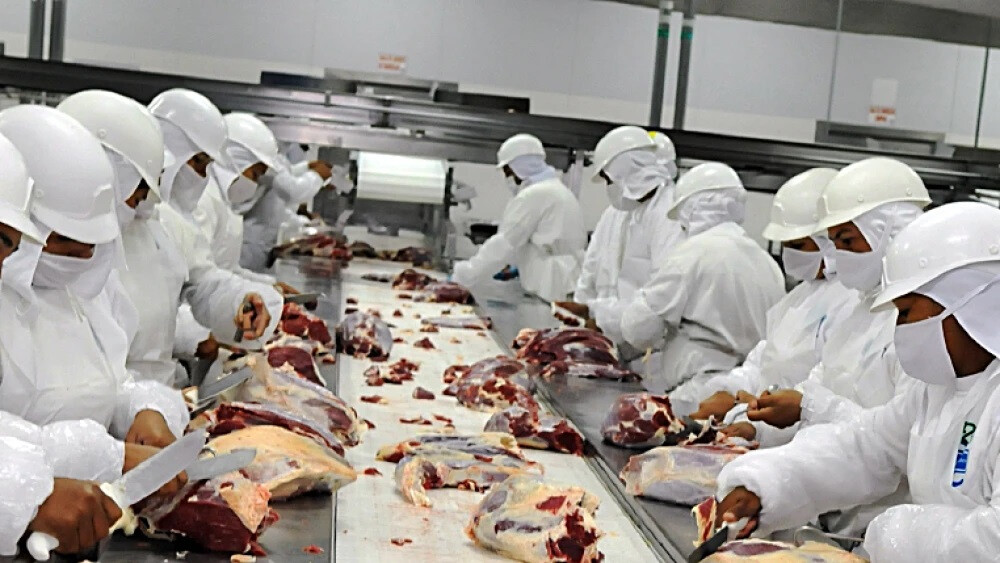
Asuncion, Paraguay – Paraguay is fast-tracking its preparations to enter the notoriously strict Japanese beef market. Julio Barrios, General Director of Quality and Integrity at Paraguay's National Animal Health and Quality Service (Senacsa), announced that Paraguay has already completed 5 of the 12 steps required for Japan's export許可 (permission) process. With Japanese technicians slated to visit in October to directly verify Paraguay's meat processing infrastructure, anticipation is high for breaking into the long-sought-after Japanese market.
More Than Halfway Through the Strict 12-Step Evaluation Process
In an interview with 'Última Hora,' Director Barrios explained, "Japan has established a rigorous 12-step evaluation system to permit beef imports from new markets." He added that Paraguay is currently at stage 5 and hopes to advance to stage 10 soon after the Japanese delegation's visit.
This on-site inspection by the Japanese delegation is expected to be a crucial turning point, streamlining the remaining procedures and bringing final approval closer. Two Japanese ministries are involved in the export approval process: one focuses on animal health, and the other assesses product integrity (safety).
Paraguay already received approval for document equivalence in product integrity in 2022. Regarding animal health, Paraguay recently submitted additional information requested by Japan, which enabled them to proceed to the on-site verification stage. This is interpreted as strong evidence that Paraguay's livestock system meets Japan's stringent hygiene and quality standards.
Japanese Technicians' On-Site Verification Imminent in October
The on-site verification visit by Japanese technicians is scheduled for October of this year, though the exact date has not yet been confirmed by Senacsa authorities. The Japanese inspection team will directly examine selected slaughterhouses (frigoríficos), laboratories, ports, and national hygiene control points to thoroughly review Paraguay's overall beef production and export infrastructure.
Potential of the Japanese Beef Market and Paraguay's Strategy
Director Barrios mentioned that Japan imports approximately 600,000 tons of beef annually, primarily from Australia, the United States, Canada, New Zealand, and Mexico. In South America, Uruguay and Argentina have long been established in the Japanese market.
However, Director Barrios made it clear that Paraguay would initially focus on industrial cuts and start with modest volumes. This is because the Japanese market prefers Wagyu-type beef, characterized by a high degree of marbling, which Paraguay's current cattle breeding environment does not yet produce in sufficient quantities to match Wagyu-grade premium meat.
Wagyu is a breed of cattle native to Japan, and its name simply means "Japanese cow." Wagyu beef is highly prized for its flavor, tenderness, and rich juiciness, and it is used as a high-priced, luxury culinary ingredient. Wagyu maximizes fat distribution within the muscle through specific breeding methods and selective breeding, boasting a unique taste and texture.
Director Barrios emphasized, "We are in a good position and on the right track. This is thanks to years of collaborative efforts between the public and private sectors, which allowed us to enter demanding markets like the United States and the European Union." Indeed, Paraguay successfully resumed beef exports to the US market in 2021, and exports to the European Union are steadily increasing. These cases demonstrate that Paraguay's livestock industry's international competitiveness and hygiene management capabilities are recognized.
Growth of Paraguay's Livestock Industry and Export Expansion Strategy
Paraguay is the fourth-largest beef producer and a major exporter in South America, following Brazil, Argentina, and Uruguay. Thanks to vast pastures and abundant resources, beef is one of Paraguay's key export items and a crucial pillar of its economy.
Recently, Paraguay has continuously invested in modernizing its livestock system and improving quality. In particular, it has focused on strengthening disease management and traceability systems to produce safe beef that meets international standards. These efforts have been decisive in effectively controlling animal disease outbreaks like foot-and-mouth disease and gaining the trust of export markets.
The Paraguayan government and the livestock industry aim to diversify export markets by entering the Japanese market. Currently, major export destinations for Paraguayan beef include Chile, Russia, and Brazil, with exports also reaching Taiwan and Hong Kong in the Asian market. Entry into the Japanese market signifies an expansion into a high-value-added market and will elevate the status of Paraguay's livestock industry.
However, the Japanese market increasingly demands not only high quality but also non-financial factors such as sustainability, animal welfare, and carbon footprint. The Paraguayan livestock industry must also strive to adopt environmentally friendly and ethical production methods in line with these global trends.
This effort to enter the Japanese market is expected to be a significant turning point for Paraguay to strengthen its position in the global meat market and secure a driving force for economic growth. We look forward to the day when Paraguayan beef graces the tables of Japanese consumers.
[Copyright (c) Global Economic Times. All Rights Reserved.]



























